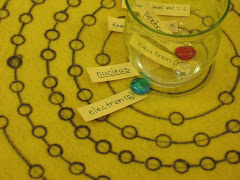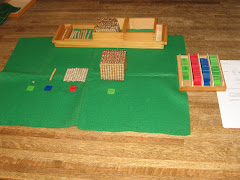The first time I observed a Montessori preschool class in session, I was quite taken aback by the methodical nature of a particular child who was preparing to have snack. He had decided he wanted to eat his snack, so he put his work back on the shelf, put on an apron, went into the bathroom and washed his hands, went the practical life shelf and ever so carefully poured himself a glass of juice. He then put the juice on the snack table. He was just as careful with serving himself crackers. He placed the bowl on the snack table, pulled the chair out, sat down, and gingerly ate his snack. The child was 4 years old.
I reflected on the amount of independence this child must feel by preparing his own snack, rather than relying on an adult to serve him food and drink. Of course, behind the scenes there is much preparation by the classroom teachers to lead up to this point. First of all, the child was not new to the class, but had been there an entire year. Second, we must remember the teacher demonstrates how everything is done (basically giving a lesson on how to prepare snack), before the child tries it out on his own.
While one might think “practical life” is only utilized in preschool, older students can benefit from it as well. Here is a list of some of the benefits of practical life in the Montessori classroom listed by the North American Montessori Center (NAMC):
The link to the entire blog entry is here:
http://www.montessoritraining.blogspot.com/2008/06/importance-of-practical-life-activities_11.html
Practical life activities in elementary can include sewing, food preparation, fabric crafts, social graces, etc.
In our upper elementary/middle school classroom, we have a practical life shelf. Having students ages 9 to 13, we have to be a bit more creative so they do feel enticed by the activities. Last year in spring, I gave my students 3 or 4 crochet lessons, but we did not have a practical shelf. This year, we have a basket on the shelf, with yarn, crochet hooks, and books available to the students.
http://www.interfaithcouncil.com/DesktopDefault.aspx?tabid=161 (It is a local Washington State campaign.)




Salaam alaikum Angelique!
ReplyDeleteHow exciting that your class is going to take on knitting for a community project!! I wanted to take on knitting this winter, but I think I have too much on my craftin plate as it is. I really enjoy your blog by the way.
Thanks Ameenah! We have the rings for knitting hats, but I don't really know how to use them all that well, so most of them are crocheting. They all keep asking me "When are we going to crochet?!" and are always looking forward to it. :) Thanks for the feedback, by the way. Good to know that people are reading it.
ReplyDelete